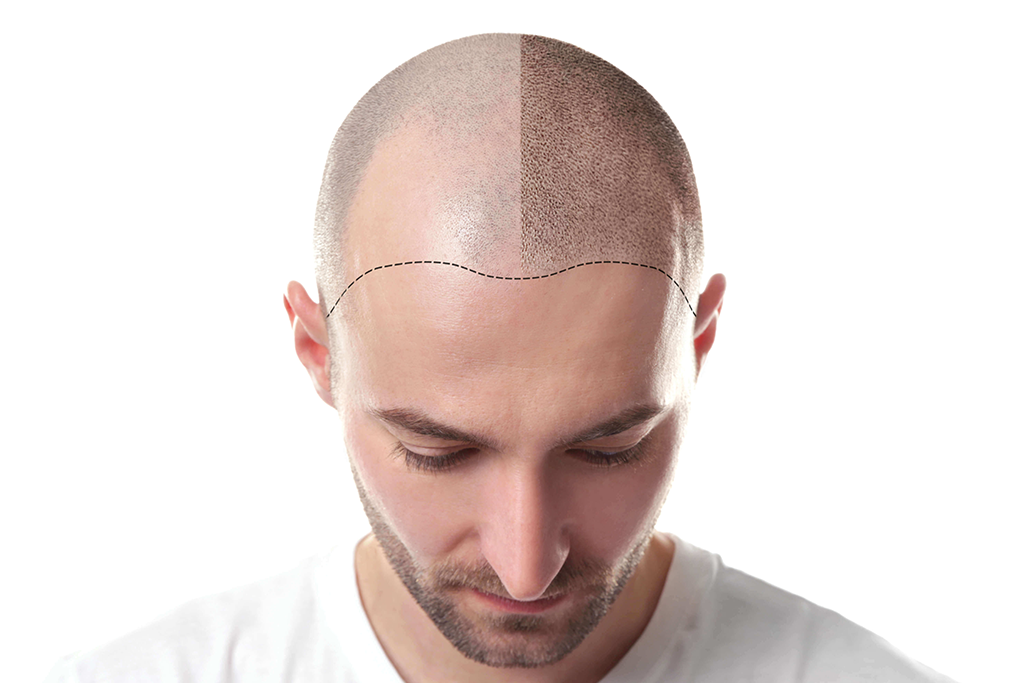
Although the history of hair transplantation goes back many years, new methods such as DHI hair transplantation (Direct Hair Implantation) have been developed through experimental studies.
The main difference between the DHI hair transplant method and the FUE hair transplant method is the type of canals where the root is inserted. The DHI hair transplant technique does not use the channel opening method like the FUE method. The roots placed inside the implant pen are implanted directly into the scalp. The implant pin also allows one to have total control over the depth, direction and angle of the grafts. A very good result is achieved in this way.
The procedure of hair transplantation called FUE is three-stage while in DHI hair implantation it is two-stage. The aim of this procedure is to improve the quality of the hair transplant, to protect the current hair pattern without a short haircut and thus to ensure a quick return to everyday life.
The DHI method uses a special hair transplant device called the Choi Implant Pen. Choi Implant Pen is a medical tool used to re-implant the hair follicles into the scalp after extraction from the donor site. Hair follicles from the donor area are inserted into this implant pen and implanted directly into the hairless areas.
Although DHI hair transplantation seems to be a simple procedure, it is one of the most advanced hair transplantation techniques. With the DHI technique, the hair follicles are removed and implanted one by one. Using the Choi Implant Pen in hair transplantation is a process that requires experience and professionalism and should only be performed by an experienced doctor.
Choi Implant Pen is a pen-like tool with a hollow needle at its tip. During hair transplantation, doctors place the hair graft on the hollow needle tip of the pen and implant it into the scalp. This process is repeated for each graft. In hair transplantation using the DHI method (Direct Hair Implantation); The hair transplant doctor and hair transplant team use about 6 pins to optimize the implantation time and speed.
By using the Choi Implant Pen in hair transplantation, there is no need for canal incisions in the recipient area, i.e. during the canal opening process as is done with the FUE method. With the DHI method, doctors can inject grafts directly into the recipient areas. This reduces patient trauma and blood loss during hair transplantation
In hair transplantation using the DHI (Direct Hair Implantation) method, the hair follicles taken from the donor area are transplanted to the recipient area in a short time and with less damage. After transplantation, a higher survival rate of the graft can be achieved. In addition, reduced trauma means a faster recovery time for patients to be able to return to their everyday lives more quickly.
In DHI hair transplantation, the healing process is faster compared to other techniques. Because it only takes 3-4 days for the scalp crust to come off. This period can be up to 10 days with the FUE technique.
With the DHI hair transplant method, you can return to your normal life in less time
- Class 1 represents normal hair growth and no visible hair loss. No hair transplant necessary.
- Class 2 is characterized by the beginning of the hairline retreat and receding hairline forms on the forehead. 1,500 grafts
- Class 3 patients show a clearer receding of the hair over the temples and also the hairline on the forehead. At class 3 vertex hair loss begins of person significantly at the vertex 2,000 2,500 grafts
- Class 4 hair loss is clearly noticeable on the crown or the patient has significant hair loss over the temples and frontal 3,000 grafts
- Class 5 hair loss reaches distinct forms with the greatest hair loss in the vertex and crown area Hair transplant at this class or higher requires more grafts to achieve coverage and fullness 3,500-4,000 grafts
- Class 6 patients show a lot of hair loss but still have donor areas This hair can still give excellent results In two sessions about 4,000 -4,500 grafts
- Class 7 patients shows the greatest hair loss ever. There may still be sufficient areas of donor hair to harvest, but results may be limited. 4,000-5,000 grafts
